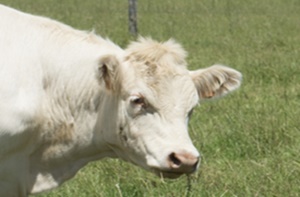Co-infection tuberculose-paratuberculose chez des vaches laitières au Maroc
Résumé
La tuberculose bovine (TB) est une zoonose endémique majeure au Maroc. La paratuberculose bovine (PTB) ne présente pas de statut épidémiologique connu au Maroc. Le présent travail a porté sur l’investigation de la co-infection TB/PTB au niveau de 6 élevages de bovins laitiers (A et F) afin de générer des informations sur le possible statut de la PTB sur le terrain. Mycobacterium bovis a été isolé chez 25 parmi 225 vaches laitières. Les isolats de M. bovis appartiennent à 7 spoligotypes: SB 0120, SB 0121, SB 0125, SB 0265, SB 0869, SB 1167 et SB 1265. Mycobacterium avium subsp paratuberculosis (Map) a été isolé chez 9 parmi 51 vaches laitières. Ainsi la co-infection TB/PTB a été diagnostiquée au niveau de trois élevages de vaches laitières (A, B et E). En outre, au niveau de l’élevage E, la co-infection TB/PTB au niveau intra-individuel a été retrouvée chez trois vaches laitières. Ces résultats confirment la co-infection TB/PTB au niveau des élevages bovins laitiers au Maroc. Cependant, notre information a été limitée à 225 vaches laitières au niveau du tiers nord du Maroc. Ainsi, d’autres recherches sont à programmer afin de contrôler le statut des bovins laitiers au niveau de tout le royaume.
Mots clés: Tuberculose, paratuberculose, bovine, Maroc
Téléchargements
Full-text of the article is available for this locale: English.

Téléchargements
Publié-e
Comment citer
Numéro
Rubrique
Licence

Revue Marocaine des Sciences Agronomiques et Vétérinaires est mis à disposition selon les termes de la licence Creative Commons Attribution - Pas d’Utilisation Commerciale - Partage dans les Mêmes Conditions 4.0 International.
Fondé(e) sur une œuvre à www.agrimaroc.org.
Les autorisations au-delà du champ de cette licence peuvent être obtenues à www.agrimaroc.org.

